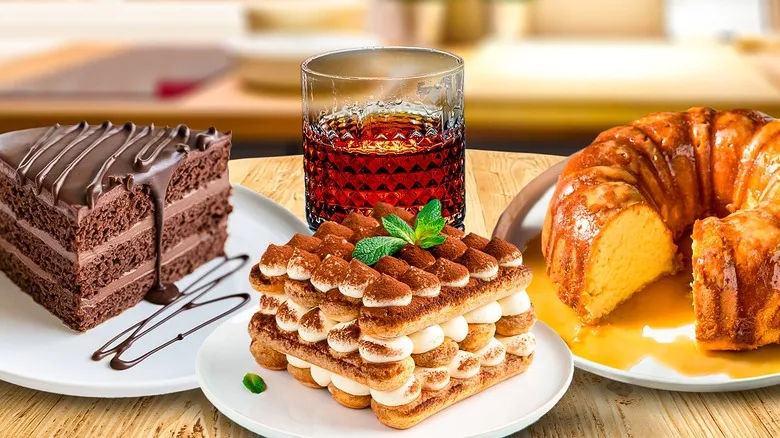1. Create your own DIY vanilla extract
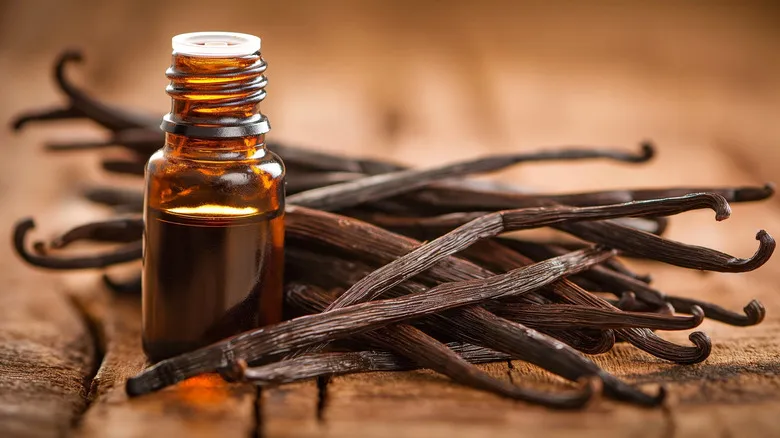
Enhance your pantry with a delightful addition that every home baker will appreciate: homemade vanilla extract. I began this process to prevent waste from the expensive Madagascar vanilla beans used at one of my kitchen jobs for making caramels. Since the pods often get stuck in the machine attachments, we scrape out the seeds for use, leaving the pods behind.
Creating vanilla extract is straightforward, requiring just two ingredients: liquor and vanilla beans. For a versatile option akin to store-bought extract, opt for high-quality vodka. If you prefer a more unique flavor, consider using your favorite whiskey or rum.
Here’s a simple method to produce an 8-ounce bottle: Split 2 vanilla bean pods lengthwise to reveal the seeds, and place the pods in a clean, sterilized 8-ounce bottle with an airtight lid, such as a screw top or swing top. Using a funnel, carefully pour in 1 cup of liquor. Secure the lid tightly and store the bottle in a cool, dry place away from direct sunlight for a minimum of six months, or up to a year. The infusion time depends on how strong you want the vanilla flavor to be. If you’re using empty pods like I do, let it infuse for the full year to extract as much flavor as possible from what remains.
2. Add a splash in batters and doughs

Experience the convenience and adaptability of incorporating various liquors into your batters and doughs. Just a small addition to your recipes for cakes, cheesecakes, brownies, and cookie doughs can enhance flavor without affecting the texture or the final baking results. In fact, you should keep the other liquid ingredients unchanged, as hard, unflavored spirits contain less water and nearly no proteins or fats compared to baking liquids like milk or heavy cream. Thus, consider the liquor measurement similar to that of an extract, using it as a flavor enhancer and adding it alongside the other liquid components.
For some inspiration, try creating a decadent eggnog cheesecake with spiced rum and freshly grated nutmeg blended into the cream cheese mixture, or indulge in rich chocolate brownies made with a bit of rye flour and a splash of rye whiskey. I must also mention a tip from one of my former pastry chefs, who would add a touch of rum to her classic banana bread recipe, enhancing the fruity flavors and aromas to an incredibly delightful level. Ever since I discovered that technique, I’ve never made banana bread any other way.
3. Booze up your pies
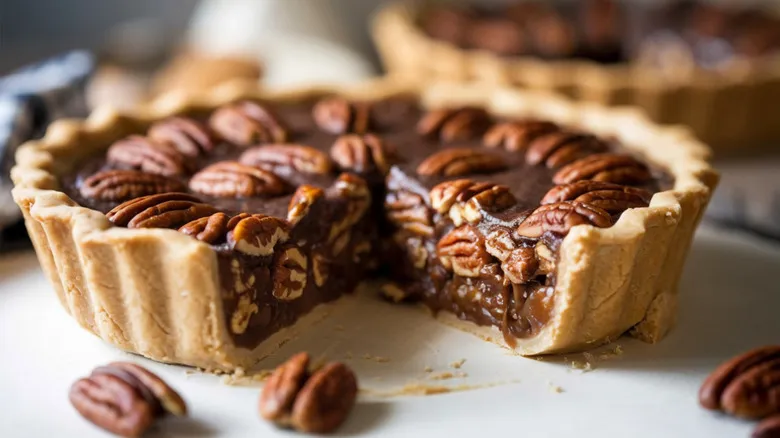
Keep it a secret from your grandma... we're indulging in some shots while enjoying our family's renowned pecan pie this year. Adding a splash or two of alcohol to pie fillings is a delightful way to revitalize traditional recipes and introduce exciting flavors.
The beloved selection of autumn favorites is an ideal starting point. Pecan, pumpkin, sweet potato, and apple pies pair wonderfully with warming spirits like whiskey, bourbon, and spiced dark rum. Alton Brown swears by rye whiskey in his pecan pie, as it perfectly balances the filling's sweetness. Cranberry pie with gin is another wonderfully boozy combination.
In addition to enhancing the filling, incorporating liquor into pie dough offers significant advantages as a gluten inhibitor. Due to its low water content, alcohol minimizes gluten formation when mixing flour with other liquid ingredients, resulting in a more pliable dough that’s easier to roll and shape. Plain vodka is the go-to choice for this quick tip, as its neutral flavor won’t be noticeable in the pie. While you could argue that the small amount required in the recipe (about ¼ cup) allows for some flexibility in liquor choice, I suggest reserving the gin or smoky whiskey for other uses.
4. Make a ganache with a bang
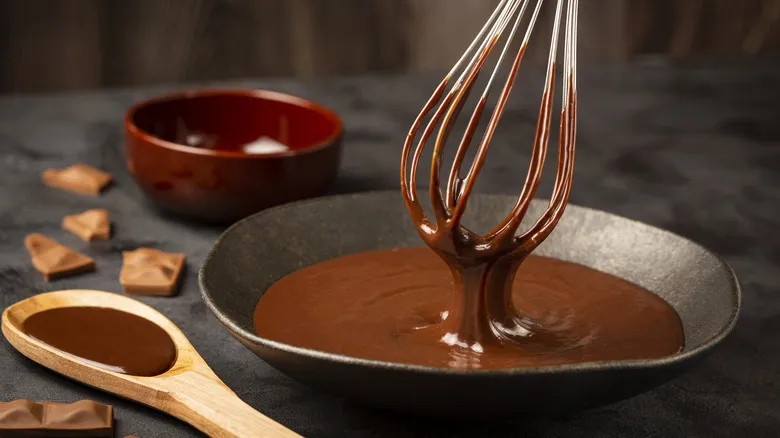
You’re likely familiar with Coco Chanel's iconic advice to take off one accessory before stepping out the door. However, ganache is one accessory you definitely want to keep on. In my experience, ganache consistently shines as a delightful addition to desserts, enveloping them in a luxurious, silky richness. This simple blend of chopped chocolate and heavy cream is easily customizable, allowing for a touch of creativity.
When added in small amounts, liquor can infuse ganache with a whole new character, especially when experimenting with flavored spirits. I’ve crafted peanut butter whiskey milk chocolate ganache for macarons, blood orange vodka dark chocolate ganache for a sophisticated winter tart, and honey-infused gin to enhance a white chocolate ganache drizzled over lemon cookies, inspired by the classic bee's knees cocktail. Unleash your creativity by using a spirited ganache as a base to create multi-flavored and multi-layered pastries, cookies, cakes, and beyond.
5. Macerate fresh and dried fruits
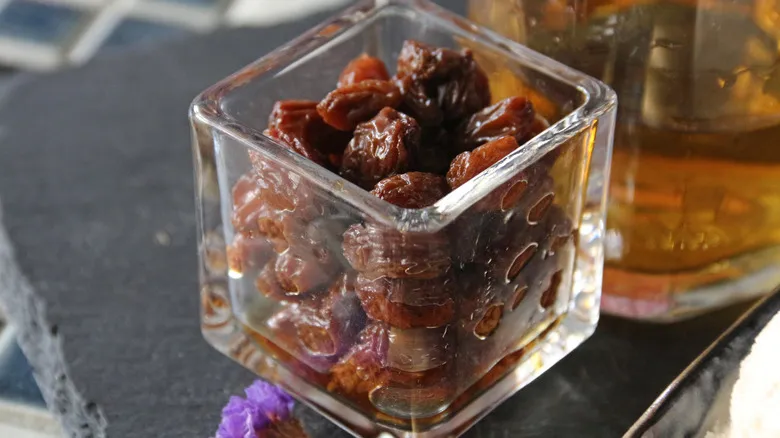
Dried fruits hold immense potential, yet they often remain understated at first, appearing shriveled in their own timidity. If they require a bit of liquid encouragement to reveal their finer qualities, I’m the perfect ally to help them shine. Soaking dried fruits in liquid softens their dehydrated texture, transforming them into plump, juicy morsels that still boast plenty of character.
If you’re eager to explore bold flavors, let that liquid be none other than alcohol. We experimented with this technique at a previous job while developing a rum raisin ice cream recipe. We found that gently warming the dried raisins in rum for about 20 minutes on low heat, rather than soaking them overnight, was a much quicker and more effective way to macerate them. This heating method can be applied to all dried fruits; just remember to chop larger pieces, like dried apricots, into smaller bites and allow them to cool to room temperature before using. This technique is perfect for creating a spirited carrot cake, a moist fruit cake, or a zesty Irish soda bread.
However, don’t let dried fruits monopolize the liquor. Fresh fruits can join the fun as well. Think about soaking fresh pitted cherries in liquor and sugar before incorporating them into a Black Forest cake, or macerating fresh berries or stone fruits to top cakes, quick breads, or baked meringues.
6. Whisk into creamy custards

Revamping classic custard recipes such as pastry cream, crème caramel, crème brûlée, sabayon, ice cream, and crème anglaise is as easy as incorporating some liquor. These smooth, creamy custards provide an excellent foundation for spirits, as the rich, sweet liquids create a delightful contrast to bold, smoky, and spicy liquors like whiskey, tequila, and rum.
At a restaurant where I was part of the pastry team, one of the most popular desserts was a thick square of chocolate bread pudding, baked to order. Our recipe called for soaking stale brioche bread overnight in a rich chocolate custard sauce infused with bourbon. It’s no wonder it became a best-seller on the menu.
While you can experiment with the amount of alcohol in most custard styles, you need to be more precise when adding liquor to ice cream bases. Since distilled spirits have a lower freezing point than water, their inclusion can affect the ice cream's ability to set, preventing the formation of some ice crystals and resulting in a softer texture. I recommend limiting the amount to ¼ cup of liquor per quart of ice cream base. This way, the ice cream will still freeze properly without the risk of being too runny after churning.
7. Saturate baked cakes
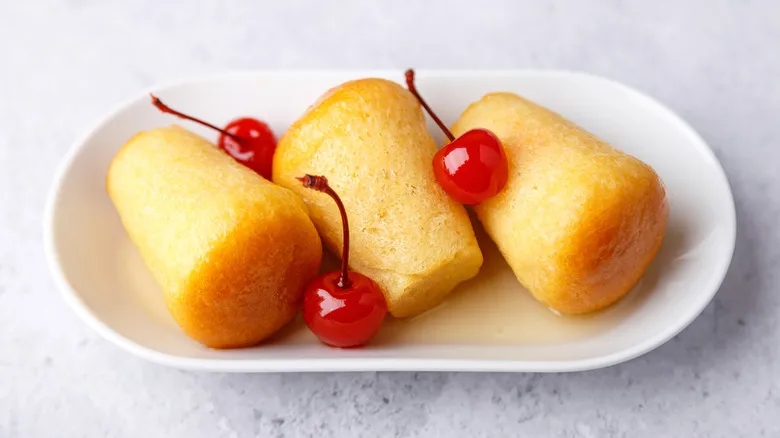
A freshly baked cake is delightful on its own, simple and pure. However, some cakes are meant to be generously soaked in liquor. The tender crumb of the cake can slowly soak up any liquid applied to its surface, and when that liquid is alcohol, it’s even better. Many bakeries and pastry chefs use the technique of brushing cake layers with milk or simple syrup to keep the crumb moist, effectively preventing the cakes from drying out. I often add a splash of liquor for an extra kick.
I have a special fondness for baba au rhum, having prepared countless versions of this sweet, yeasted cake during pastry school. Baked in individual molds, they make a delightful treat for any special occasion at home. After baking and cooling outside their molds, the cakes are soaked in a hot rum sugar syrup until they become plump and are served warm.
For a simpler alternative that doesn’t require the intricate steps of baba au rhum or a multi-layered cake, consider a poke cake. After baking your sheet cake, poke holes all over the surface, allowing you to generously soak it with a spiked sauce, syrup, pastry cream, or sweetened condensed milk.
8. Soak crisp cookies
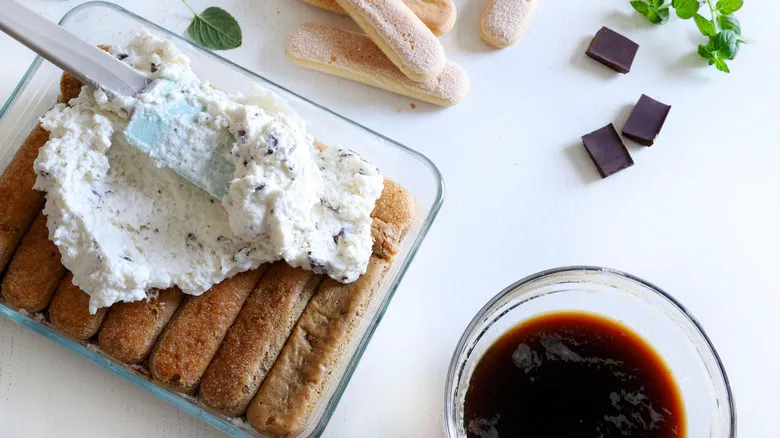
Like a parched sponge, a crunchy cookie absorbs liquor faster than a speeding Bulleit Rye Whiskey. This method is perfect for achieving quick and powerful flavor infusions in no time at all.
This technique shines when used in the classic Italian dessert tiramisu. At its core, this dish consists of layers of sweetened mascarpone cream and ladyfingers soaked in coffee. However, my preferred twist—both at work and at home—is to blend some alcohol, such as rum or bourbon, with the coffee before soaking the ladyfingers. It’s easy to taste-test; just take a quick sip of the mixture before soaking the cookies to determine if you’d like to add more for a bolder flavor.
No-bake bourbon balls are another delightful treat that benefits from a splash of liquor in the mix. While recipes can differ, a popular version involves grinding vanilla wafers into fine crumbs using a food processor, then combining them with nuts, sugar, and bourbon. The dry mixture quickly absorbs the bourbon, forming a dough that is then rolled into balls and chilled.
9. Spike the final glaze or frosting
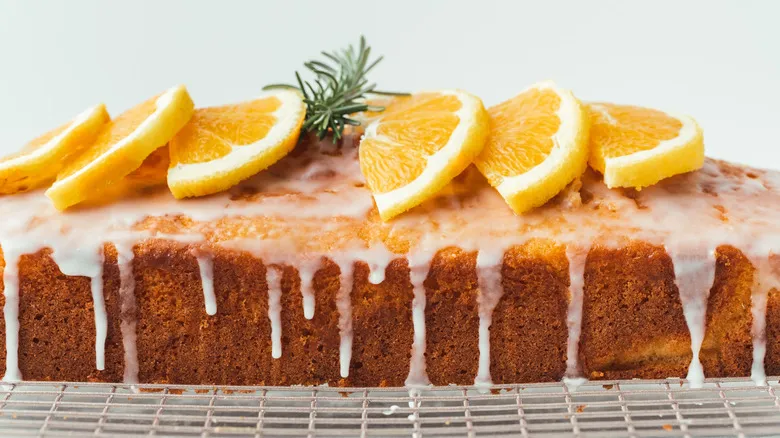
From glossy glazes to airy frostings, the final touches on your confections can easily be enhanced with a hint of liquor for a sweet and subtle flavor. A powdered sugar glaze serves as a versatile base that invites the addition of various ingredients, often drizzled over cakes, cookies, and a variety of pastries. With such a straightforward foundation, feel free to experiment with unique flavor pairings. I've drawn inspiration from a margarita cocktail, highlighting its key components: tequila, orange liqueur, lime, and salt. This blend has led me to create orange-zested shortbread cookies and pound cakes topped with a tequila and lime juice glaze, finished with a sprinkle of flaky sea salt.
Basic frostings and buttercreams can be elevated by incorporating a splash of liquor instead of traditional extracts. Simply follow your usual recipe, swapping in your preferred liquor for the extract. For instance, I transformed a standard buttercream recipe into a spicy treat by using cinnamon-spiced whiskey in place of vanilla extract, which I then used to frost vanilla cupcakes. You can also whip up a foolproof whipped cream infused with a bit of liquor, making it an easy yet delightful topping for various desserts.
10. Serve a sauced dessert sauce or spread

A flavorful sauce is the perfect way to add a bold finishing touch to your baked goods. Plus, serving it on the side is a considerate option for guests with varying tastes or ages who may prefer to avoid (or shouldn't have) a strong spirit.
When it comes to a spirited caramel sauce for drizzling over desserts, I opt for whiskey—typically bourbon. What sets bourbon apart from other types of whiskey is its grain composition and aging method. To qualify as bourbon, it must contain at least 51% corn in the grain blend and be aged in new charred oak barrels. With this in mind, consider the delightful sweet notes found in bourbon, such as vanilla, toasted nuts, browned butter, and, of course, caramel!
Beyond the realm of sugary caramel, you can elevate simple spreads with bold flavors, perfect for generously slathering on freshly baked items like scones, biscuits, breads, and muffins. A subtly spiked, restaurant-quality butter infused with hints of honey and bourbon or agave and tequila would be a fantastic addition to any brunch spread.
11. Pair with veggies for a sweet-and-savory side

Certain robust vegetables, such as sweet potatoes, yams, and various winter squashes, tend to lean towards the sweeter end of the flavor spectrum. And guess what else can blend in beautifully with them? That's right, liquor.
Dust off the family cookbooks and flip to your favorite cozy homemade casserole recipes. The rich caramelized and nutty undertones of whiskey complement dishes like baked sweet potato casserole perfectly, especially when you enhance those flavors with ingredients like toasted nuts or a layer of lightly browned marshmallows on top.
When the winter CSA boxes are brimming with winter squashes week after week, I often cut them in half and slather them with generous amounts of melted butter, honey or maple syrup, a few whole sprigs of winter herbs, and a hearty splash of whiskey, before roasting them until they are steaming, tender, and incredibly fragrant.
12. Bake a plastered pizza

If you take pride in being a flavor adventurer and often pass on a plain cheese pizza in favor of more thrilling toppings, you'll be excited to try these spirited ideas for your next savory pie. When you're in the mood for barbecue chicken pizza, combine your favorite barbecue sauce with a tablespoon or two of bourbon. For a twist on traditional tomato sauce, consider using vodka sauce. Just a small amount of liquor can elevate the flavors and aromas of the ripe, juicy tomatoes.
Speaking of juicy, soaking fresh pineapple slices can create a daring pizza topping. Both white rum and tequila are excellent choices for this idea. Let the fruit macerate for at least one hour, or up to six hours for maximum flavor. Fresh pineapple is ideal for the best taste and texture, so steer clear of canned varieties or those packed in syrup. While canned pineapple has its uses in the kitchen, I recommend fresh for this application. If the pineapple isn't perfectly sweet or ripe, you can enhance it with a liquid sweetener mixed with the alcohol, such as simple syrup, agave nectar, or honey. And of course, don’t forget to pair the pineapple with chunks of ham!
13. Flambé for a showstopper
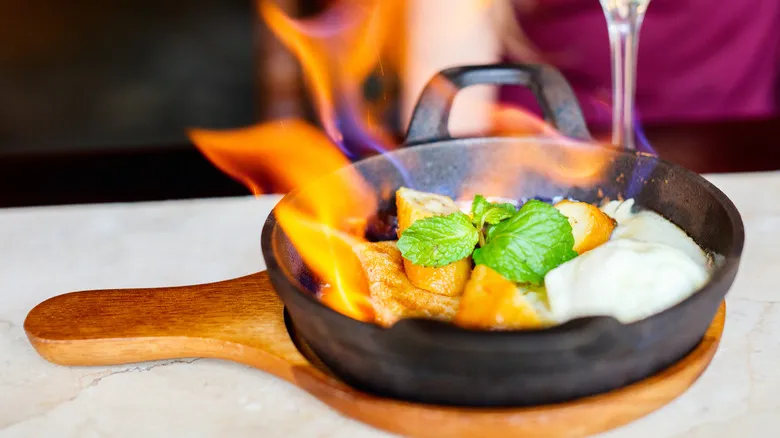
Ignite the flames! A significant milestone for many pastry chefs is taking on the flambé station during brunch buffets or catered events. I’ve braved countless shifts juggling various bottles of spirits, quirky portable gas burners, and a collection of butane canisters. And let me tell you... even though it can get monotonous preparing the same dish repeatedly for guests indulging in bottomless mimosas, there's always excitement in playing with fire. Always. As long as you adhere to essential flambé safety precautions—such as using a pan with a long handle and long-reach lighters—you can certainly add a touch of flames to create a spectacular dining experience right in your own home.
Suzette sauce and bananas foster are two beloved desserts that you can flambé with alcohol, and both pair beautifully with a range of baked treats, from cake slices to set custards. While Suzette sauce traditionally uses an orange liqueur, you can easily swap it for an equal amount of bourbon or whiskey.
For other stunning presentations, think about classics like figgy pudding or baked Alaska. Place these beautiful desserts on a flameproof platter, carefully pour or ladle the liquor over them, and ignite the liquid. Just make sure the alcohol burns off completely and the flames have extinguished before slicing and serving to your amazed guests.
Recommended
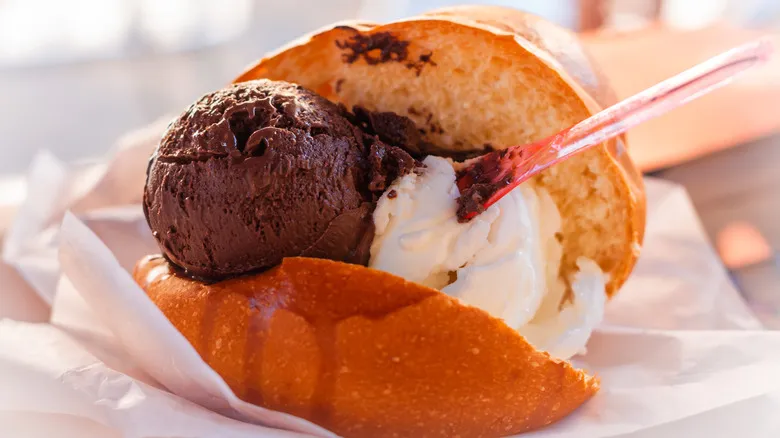
What Makes Sicilian Ice Cream Sandwiches Unique?
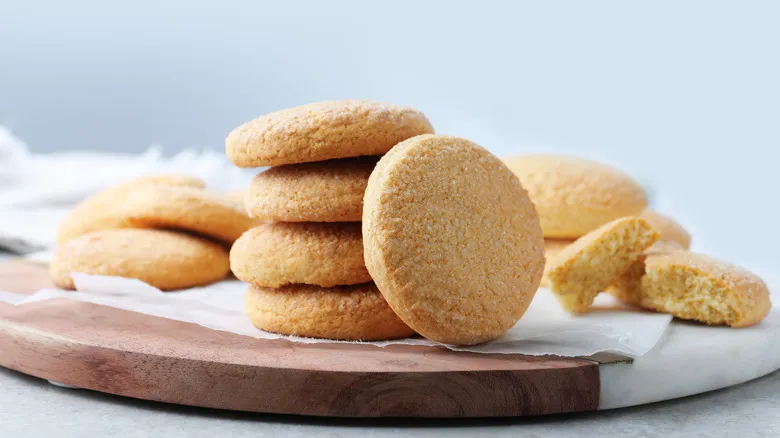
The Easy Way To Incorporate Unexpected Flavors Into Your Sugar Cookies
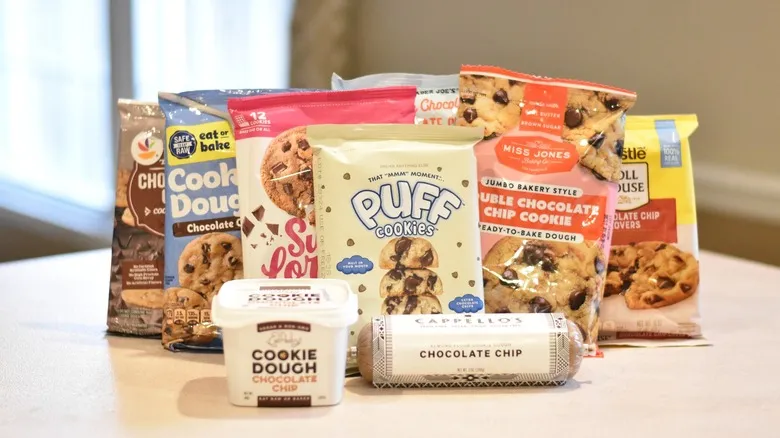
Store-Bought Cookie Dough Ranked Worst To Best
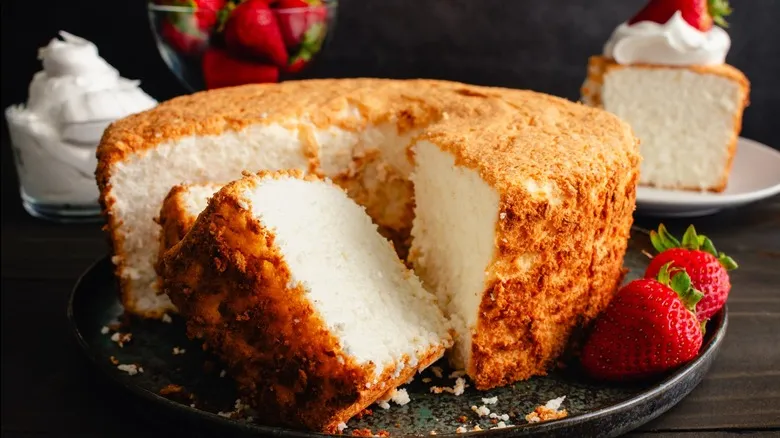
Is Cake Flour Really Better For Homemade Cakes?
Next up

